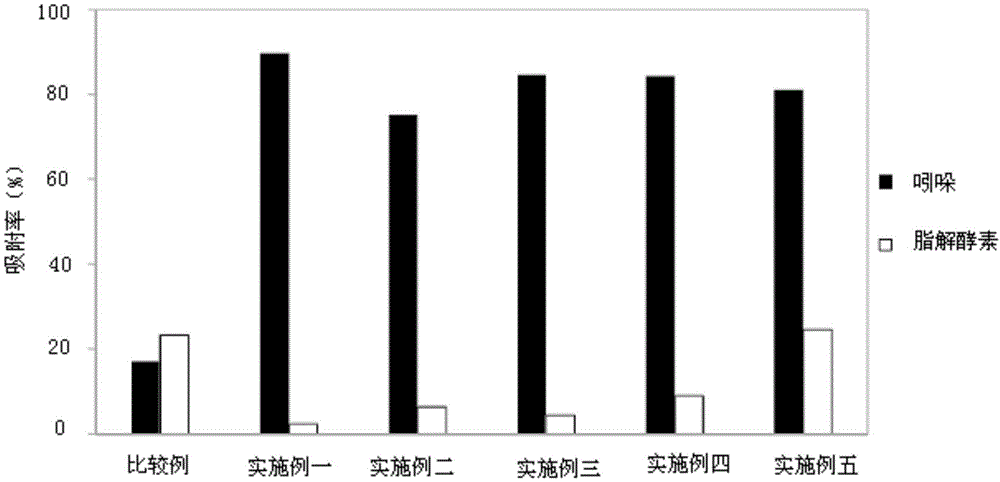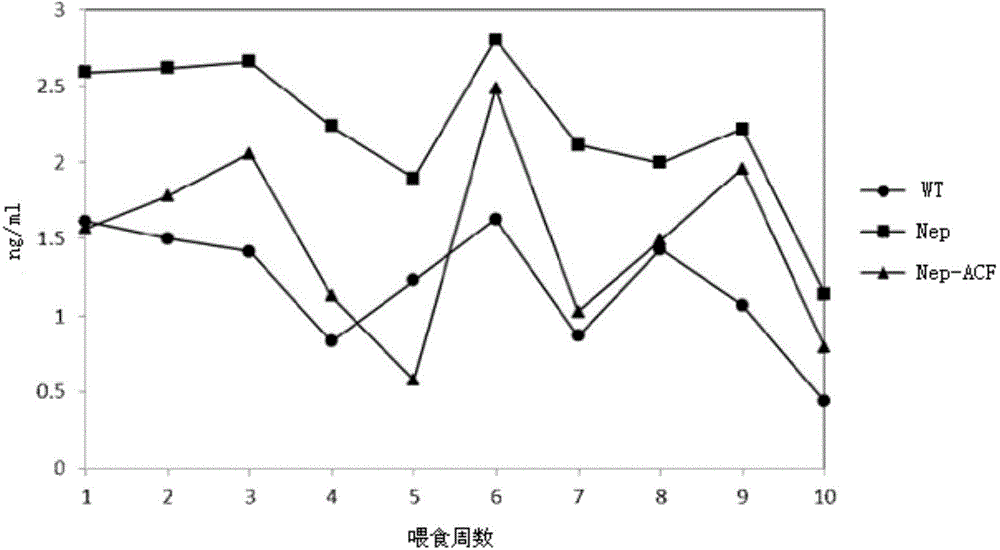Adsorbent capable of reducing in vivo urotoxin
A technology for adsorbents and urea toxins, applied in the direction of anti-drugs, urinary system diseases, carbon active ingredients, etc., can solve the problems of interfering with the normal function of the gastrointestinal tract, limited effect, poor adsorption of urea toxin precursors, etc., and achieve high adsorption force, reduce the incidence, reduce the effect of accumulation
- Summary
- Abstract
- Description
- Claims
- Application Information
AI Technical Summary
Problems solved by technology
Method used
Image
Examples
Embodiment 1
[0039] This embodiment provides an adsorbent that can reduce urea toxins in the body. The adsorbent is a polyacrylonitrile activated carbon fiber coated with a capsule, and the polyacrylonitrile activated carbon fiber is made of polyacrylonitrile carbon fiber cloth ( 30, Zoltek Companies, Inc.) were oxidized and then ground in aqueous carbon dioxide gas at 1000°C for 5 minutes and then ground. The polyacrylonitrile carbon fiber cloth is composed of 90wt% polyacrylonitrile plus 10wt% rayon (Rayon) or pitch (petroleum pitch). The activated carbon fiber has an average diameter of 7.6 μm and a BET specific surface area of 964 m 2 / g, the density is 2.13g / m 3 , The percentage of micropores / mesopores / macropores is 22 / 78 / 0%, the length is 23.2±6.9μm, the total acidic groups are 1.092meq / g, and the total basic groups are 1.30meq / g. figure 1 This is the appearance of the activated carbon fiber of this example.
[0040] figure 2According to the in vitro adsorption test results, ...
Embodiment 2
[0050] The adsorbent of the present embodiment is to coat polyacrylonitrile activated carbon fiber with a capsule, and this polyacrylonitrile activated carbon fiber is made of polyacrylonitrile carbon fiber cloth ( 30, Zoltek Companies, Inc.) is oxidized and ground at 900°C for 20 minutes in water-containing carbon dioxide gas, and then ground. Its properties are as follows: the average diameter is 9.3 μm, and the BET specific surface area is 398m 2 / g, the density is 1.749g / m 3 , The percentage of micropores / mesopores / macropores is 18 / 82 / 0%, the length is 27.1±2.4μm, the total acidic groups are 1.559meq / g, and the total basic groups are 0.9meq / g. The results of in vitro adsorption tests were as follows: figure 2 As shown, this Example 2 can adsorb 75.3% of indole and 6.3% of lipolytic enzymes, indicating that this Example 2 has a higher adsorption capacity for uremic toxin precursors and a lower adsorption for intestinal enzymes force.
Embodiment 3
[0052] The adsorbent of the present embodiment is to coat polyacrylonitrile activated carbon fiber with a capsule, and this polyacrylonitrile activated carbon fiber is made of polyacrylonitrile carbon fiber cloth ( 30, Zoltek Companies, Inc.) is oxidized and ground at 900°C for 40 minutes in aqueous carbon dioxide gas, and then ground. Its properties are as follows: the average diameter is 8.6 μm, and the BET specific surface area is 921m 2 / g, the density is 2.043g / m 3 , The percentage of micropores / mesopores / macropores is 21 / 79 / 0%, the length is 21.9±1.4μm, the total acidic groups are 1.384meq / g, and the total basic groups are 1.26meq / g. The results of in vitro adsorption tests were as follows: figure 2 As shown, this Example 3 can adsorb 84.7% of indole and 4.4% of lipolytic enzymes, indicating that this Example 3 has a higher adsorption capacity for uremic toxin precursors and a lower adsorption for intestinal enzymes force.
PUM
 Login to View More
Login to View More Abstract
Description
Claims
Application Information
 Login to View More
Login to View More - R&D
- Intellectual Property
- Life Sciences
- Materials
- Tech Scout
- Unparalleled Data Quality
- Higher Quality Content
- 60% Fewer Hallucinations
Browse by: Latest US Patents, China's latest patents, Technical Efficacy Thesaurus, Application Domain, Technology Topic, Popular Technical Reports.
© 2025 PatSnap. All rights reserved.Legal|Privacy policy|Modern Slavery Act Transparency Statement|Sitemap|About US| Contact US: help@patsnap.com



